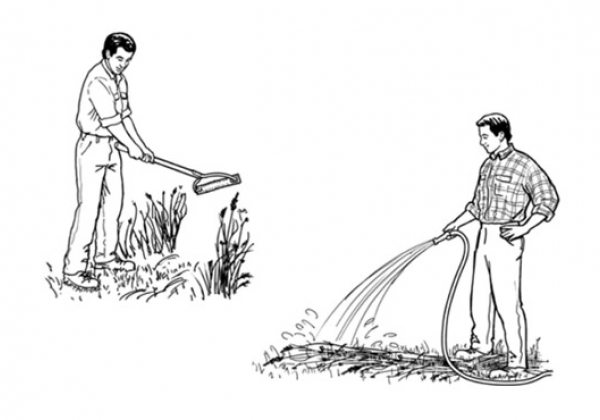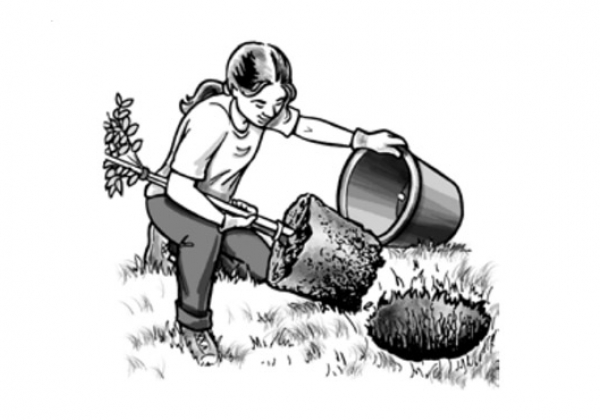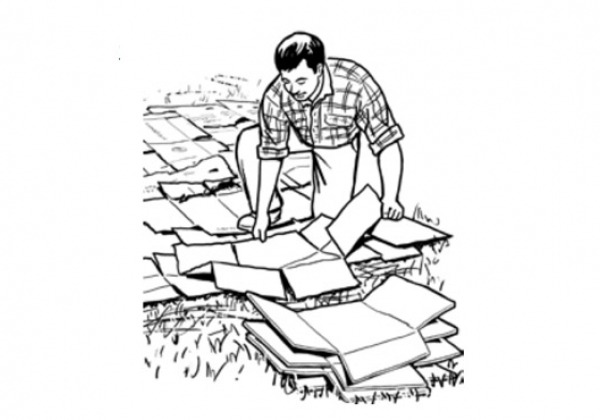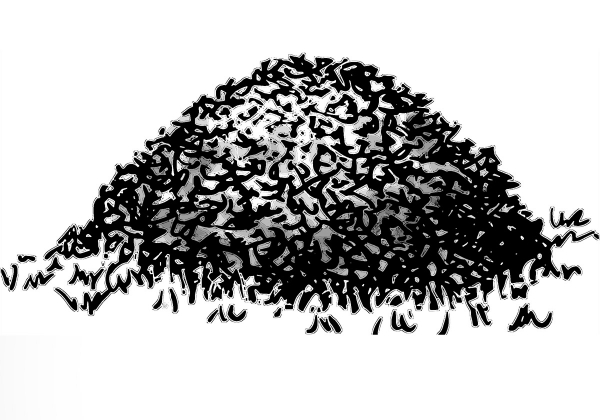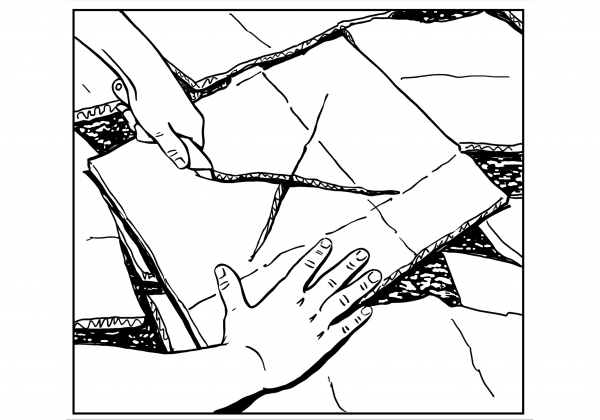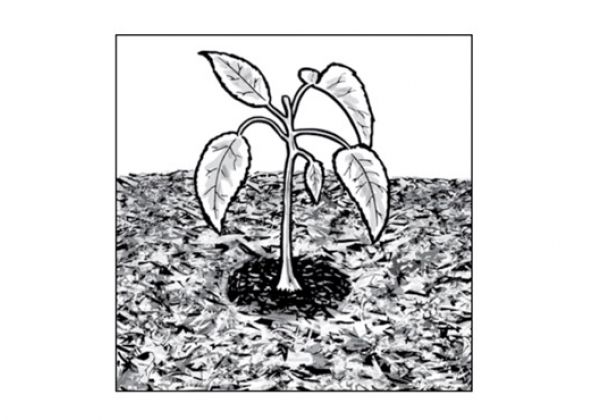How To Sheet Mulch
Sheet Mulch Overview Slideshow
Downloads
Here are some free downloads that can help you with your lawn conversion:
Sheet Mulch Party Toolkit (PDF): This comprehensive 22 page guide gives you all the information you need to sheet mulch your lawn, and organize a lawn to garden conversion party.
How-to Sheet Mulch Brochure (PDF): This simple 2 page brochure covers the basic steps of sheet mulching.
Sheet Mulch Troubleshooting
Is trenching or grading next to concrete absolutely necessary for sheet mulching?
- Yes, it may seem like a lot of work but trenching will prevent mulch and compost from spilling onto your sidewalk, and will stop 'runner' weeds from invading your garden. Cut a trench about 1 foot wide and at least 6 inches deep at a 45 degree angle toward the hardscape next to your sidewalk, driveway, utility boxes, basically anywhere grass touches concrete. Before you start trenching, call 811 to have all utilities nearby (including cable, water, PG&E, etc.) come and verify the location of any utility lines .
- Note: the grass you flip over when you trench can be used to create berms in your new garden. The berms provide more visual interest and are excellent planting mediums for native plants, which prefer more drainage.
Should I sheet mulch berms/mounds?
- Yes, we recommend that the flipped turf you use to create berms/mounds in your garden also get sheet mulched. Scavenged cardboard boxes work best when you lay them long ways on the berm.
Why can't I pull out my lawn and compost it?
- Sod can not be composted because it comes with dirt and grit. It would damage the composting machines and shut down the operation. Plus, living turf provides nutrients like nitrogen to the soil and builds up organic matter, so it's better to leave it in place and sheet mulch over it.
Are cardboard boxes safe for sheet mulching, specifically the tape and ink?
- 'Scavenged' cardboard boxes are ideal for sheet mulching. The industry standard for ink on boxes is soy based, so these boxes are completely safe. You don’t have to remove tape or staples – usually as the cardboard decomposes the tape comes up to the surface and you can just pick it out. It’s a personal choice – okay to leave the tape, but remove if you prefer. We don’t recommend waxed boxes for sheet mulching.
Sheet mulch sections completely with cardboard, compost and mulch
- If you don't have enough materials or people power to sheet mulch your entire lawn in one day, we recommend breaking it up into smaller sections and completely sheet mulching one section at a time. Don’t leave uncovered cardboard exposed for days because it will dry out, or if it rains it could get ripped and lose its effectiveness as a weed barrier.
Some planting tips:
- Make sure to ‘tickle’ or loosen the root ball before planting
- Don’t plant the rootball lower than the mulch. Ideally, the plant should sit slightly above the mulch layer.
- Keep mulch away from the stems and roots of trees, you don't want mulch volcanoes!
Don't sheet mulch with landscape cloth:
-
It does not breakdown and does nothing to feed your soil. On the other hand, cardboard decomposes and adds carbon naturally to your soil.
-
Plant roots get tangled in the cloth.
-
It’s very difficult to cut through for planting.
-
As the mulch breaks down, the cloth gets tattered and flies around.
-
Permeability is reduced.
Don't sheet mulch with rock
- It is inorganic material that does not feed your soil and can ‘bake’ clay soil even harder.
Mulch doesn’t last forever …
- If you initially put down 3 inches of mulch – our recommended amount – it should take about 1 year to decompose. The good news is that the mulch is feeding your soil as it decomposes. Eventually, you will have to add more mulch, but don't add more than 4 inches. Sometimes the mulch remains thick in most places except for a few bare patches. You can cover these spots with more mulch, or for extra weed prevention, reapply cardboard (scavenged boxes work well for this application) and then more mulch.
Weeds are back!
- Yes, it’s very likely that you will still have some weeds after you sheet mulch. Weeds usually appear at the edges of the sheet mulched area or where there were holes in the cardboard. Sometimes weeds appear from above due to ‘fly over’ by birds or planting by squirrels. Luckily, they’ll be easy to pluck out of the sheet mulch. If you have larger patches, e.g., oxalis, we recommend reapplying cardboard and mulch for extra weed abatement. Note about oxalis – if there’s no rain, it’s dormant and you may not see any when you sheet mulch in the dry season. But, as soon as it rains, the oxalis is likely to rear its weedy head.
Natural occurring biological phenomena in mulch:
- Mushrooms Mushrooms of all shapes and sizes are attuned to the natural decomposition process and can often be found residing in your mulch during the wet season. Mushrooms contribute to the whole biosystem and some bacteria eat the fungi adding more nutrients to your soil.
- Yellow fungus aka Dog Vomit - This fungus occurs naturally as mulch decomposes and, despite its unsavory appearance, will not harm your plants or your pets. If it appears right next to your plants just push it away from the root stem.
